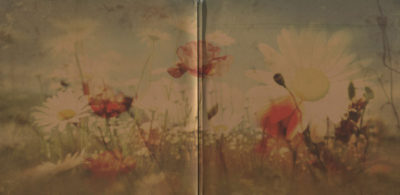The Disintegration Loops (2002)
The Disintegration Loops II (2003)
The Disintegration Loops III (2003)
The Disintegration Loops IV (2003)
In the process of archiving and digitizing analog tape loops from work I had done in 1982, I discovered some wonderful pastoral pieces I had forgotten about, having never recorded them before. Beautiful, lush cinematic truly American pastoral landscapes swept before my ears and eyes. With excitement I began recording the first one to cd, mixing a new piece with a subtle random arpeggiated countermelody from the Voyetra. To my shock and surprise, I soon realized that the tape loop itself was disintegrated: as it played round and round, the iron oxide particles were gradually turning to dust and dropping into the tape machine, leaving bare plastic spots on the tape, and silence in these corresponding sections of the new recording. I had heard about this happening, and frankly was very afraid of this happening to me since so much of my earlier work was precariously near the end of its shelf life. Still, I had never actually seen it happen, yet here it was happening. The music was dying. I was recording the death of this sweeping melody. It was very emotional for me, and mystical as well. Tied up in these melodies were my youth, my paradise lost, the American pastoral landscapes, all dying gently gracefully, beautifully. Life and death were being recorded here as a whole: death as simply a part of life: a cosmic change, a transformation. When the disintegration was complete, the body was simply a little strip of clear plastic with a few clinging chords, the music had turned to dust and was scattered along the tape path in little piles and clumps. Yet the essence and memory of the life and death of this music had been saved: recorded to a new media, remembered. William Basinski, Feb. 28, 2001.
Musik beim Sterben zuhören.
Der in Brooklyn lebende Musiker und Komponist William Basinski verfasste noch ein Postscriptum zu seinem Einleitungstext der „Disintegration Loops“. Er sah mit eigenen Augen vom Dach seiner Wohnung, eine „nautische Meile“ entfernt, die Türme des World Trade Centers zusammenstürzen. Geschockt beobachtete er, wie die Feuer bis in die Nacht hinein brannten, während im Hintergrund die Disintegration Loops liefen. Er widmete sie daher den Opfern (den Toten und den noch Lebenden) des Attentats. Man muss die Musik aber nicht zwingend mit dem Attentat verknüpfen, es reicht schon aus, die feinen Eisenpartikel immer weiter vom Tonband abbröseln zu hören, dem bisweilen sehr einsam machenden Fortgang beizuwohnen, dessen Schrecken und Trauer in der Übertragung auf ein digitales Medium auch etwas tröstliches innewohnt.
Ich schrieb einmal im Halbrausch zur Doppel-CD „Koen“ des Belgiers Jürgen de Blonde alias Köhn als deren Quintessenz, dass man daraus lernen kann, dass Verzerrung Schönheit nie zerstört (auch wenn der Begriff „Schönheit“ in der Kunst arg strapaziert wird). Dies passt auf die Disintegration Loops von Basinski mindestens genauso gut.
Auch kamen mir die Disintegration Loops in den Sinn, als es einmal im Spex-Forum eine Diskussion über das Nerd-Dauer-Thema Idealer Popsong gab. Legt man einem Popsong Elemente des Dramas, der Wiedererkennbarkeit, der Wiederholung und dessen Variierung zugrunde, dann haben die besten Disintegration Loops der vier CDs alles, was ein perfekter Popsong benötigt.
Sie lehren mich zudem noch, was prozessuales Komponieren bedeuteten kann, nämlich etwas entstehen zu lassen, was aus rein bewusstem Handeln nie hätte entstehen können. Oder wäre ein Konzept wirklich vorstellbar, bei dem man Magnetbänder 19 Jahre einlagert, um sie dann vom Abrieb des Tonabnehmers Loop für Loop langsam zerbröseln zu lassen, und aus der sich als Folge davon nach und nach eine derartig hochemotionale Musik mit jeder Umdrehung verdichtet, je mehr Informationen die Musik verliert?


